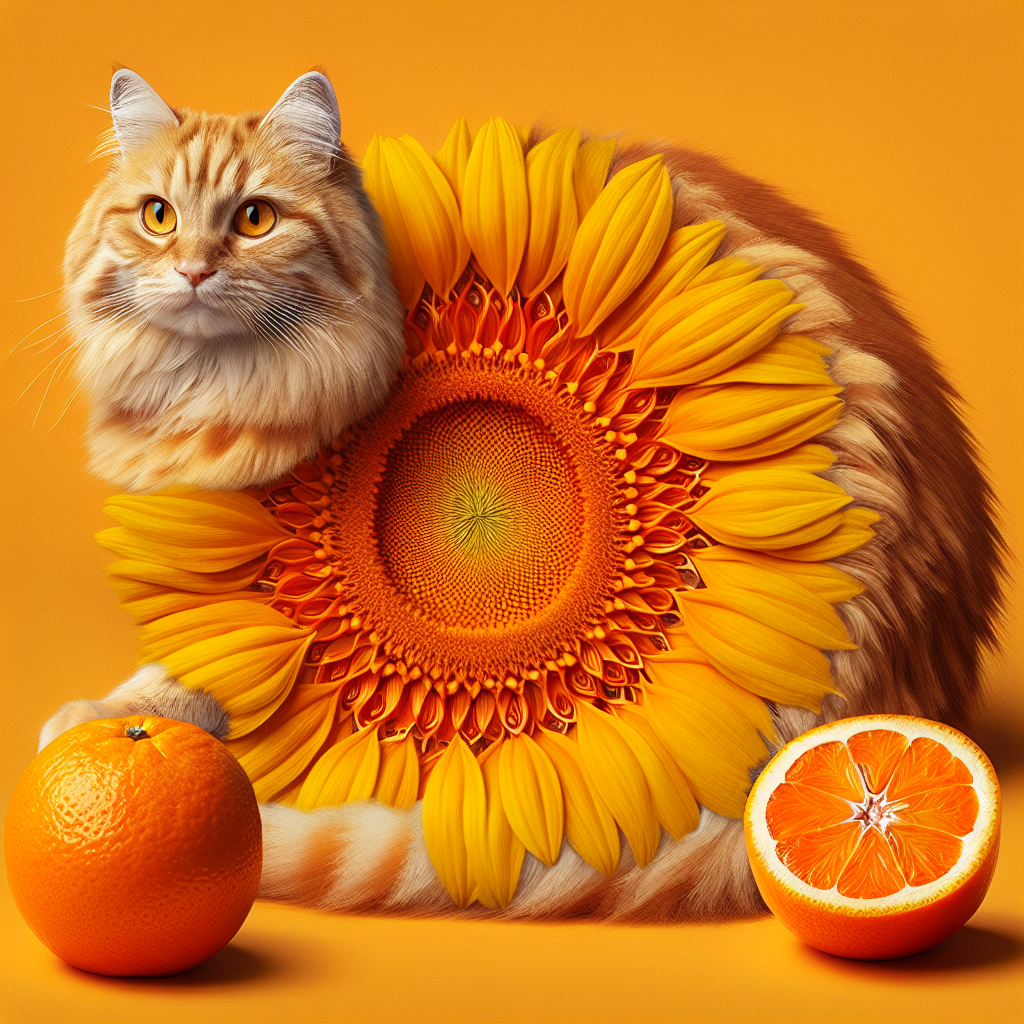Did you know that most orange tabby cats are male? This striking and popular fur color is predominantly found in male cats. While there are certainly female orange tabbies, they make up a smaller percentage of the overall population. In this article, we will explore the captivating science behind the prevalence of male orange tabbies and uncover fascinating facts about these adorable feline companions. Whether you’re a cat lover or simply curious about the mysteries of nature, this article is sure to pique your interest!
Factors Affecting Coat Color
Coat color in cats is influenced by a variety of factors, including genetics, gender, mutation, and environmental factors. Each of these elements plays a role in determining the unique coat color of an orange tabby cat. Understanding these factors sheds light on why certain coat colors are more common, such as the prevalence of male orange tabbies.
Genetics of Coat Color
The genetics of coat color in cats is a fascinating and complex subject. Various genes interact to determine the pigmentation of a cat’s fur, including those responsible for the orange tabby coloration. These genes can be passed on from one generation to the next, resulting in specific coat color patterns and variations.
Coat Color Genes
Multiple genes contribute to coat color in cats. The orange tabby gene, also known as the O gene, is responsible for the distinctive orange coloration seen in these feline friends. Additionally, other genes like the agouti gene and dilution gene may influence the specific coat patterns and shading seen in orange tabby cats.
Orange Tabby Gene
The orange tabby gene is the key factor in determining the orange coloration of these cats. It is a dominant gene, which means that even if a cat carries only one copy of the gene, it will exhibit the orange tabby coat color. This gene overrides other colors and patterns, resulting in the warm and vibrant orange hues that are characteristic of orange tabby cats.
Inheritance Patterns
Coat color inheritance follows specific patterns. The orange tabby gene is carried on the X chromosome, meaning its inheritance is sex-dependent. This chromosome is responsible for determining the gender of the offspring. As a result, the inheritance of the orange tabby gene is often linked to the gender of the cat.

Gender and Orange Tabby Cats
Statistical observations have shown that orange tabby cats are more frequently male. While this observation may lead one to believe that the majority of orange tabbies are male, it is essential to understand the underlying factors that contribute to this phenomenon.
Orange Tabby Percentage by Gender
Studies have revealed that approximately 80% of orange tabby cats are male, while only 20% are female. This skewed distribution suggests a gender bias when it comes to orange coat color in cats.
Explanation for Male Dominance
The reason for the predominance of male orange tabby cats lies in the inheritance of the orange tabby gene. Since the gene is carried on the X chromosome, for a female cat to be orange, it needs to inherit the orange tabby gene from both parents. Male cats, on the other hand, only require one copy of the gene to exhibit the orange tabby coloration. This means that orange tabby females are relatively less common due to the specific inheritance pattern of the gene.
Mutation and Orange Tabby Cats
The occurrence of orange tabby cats can also be attributed to mutations that affect their coat color. These mutations can arise spontaneously and introduce unique genes responsible for orange coloration.
Spontaneous Mutation
Mutations are unexpected changes in an organism’s genetic material that can result in new characteristics or traits. In the case of orange tabby cats, it is believed that a spontaneous mutation occurred in the genes responsible for coat color, leading to the emergence of the orange tabby phenotype.
Presence of a Specific Gene
The mutation resulting in orange tabby cats is hypothesized to be linked to the presence of a specific gene known as the Taqpep gene. This gene controls the production, distribution, and deposition of pigments in hair follicles. Variations in this gene can lead to the unique orange coloration seen in orange tabbies.
Influence on Orange Coloration
The mutation and subsequent expression of the orange tabby gene affect the production of pigment, resulting in the distinct orange coloration of their fur. This mutation has been found to be relatively stable across generations, contributing to the continued presence of orange tabby cats in feline populations.

Environmental Factors’ Influence
Apart from genetics, environmental factors can also influence the coat color of cats, including orange tabbies. These factors can contribute to variations in shade, intensity, and pattern of the orange coloration.
Sunlight Exposure
Exposure to sunlight can affect the appearance and shade of an orange tabby cat’s coat. Prolonged exposure to the sun’s rays can lighten the fur, resulting in a more faded or pale orange hue. Conversely, limited sunlight exposure can cause the fur to appear darker and more vibrant.
Diet
A cat’s diet can impact the overall health of its coat, including the orange coloration. A well-balanced diet, rich in essential nutrients, supports optimal fur health and color. Certain nutritional deficiencies can lead to changes in coat color and texture, potentially affecting the appearance of an orange tabby’s coat.
Fur Thickness
The thickness and density of a cat’s fur can affect the appearance of its coat color. Thicker fur may create a more intense and vibrant orange color, while thinner fur may result in a lighter and less pronounced shade.
Variations in Pigment Production
Environmental factors, such as temperature and humidity, can influence the production of pigments in the fur. These variations in pigment production can contribute to subtle differences in coat color among orange tabby cats.
Orange Tabby Cats: A Common Phenotype
Orange tabby cats are not only prevalent in certain regions but are found worldwide. This coat color phenotype is observed across different breeds and populations.
Worldwide Occurrence
Orange tabby cats can be found in various parts of the world, regardless of their geographical location. This widespread occurrence underscores the ubiquity of the orange tabby coat color in feline populations.
Common Appearance
Orange tabby cats are easily recognizable due to their striking coat color. They typically exhibit a base color of vibrant orange, accompanied by markings that can be solid, striped, or spotted. This distinctive appearance makes them popular among cat lovers and enthusiasts.
Popular Pet Choice
The appealing appearance and unique coat color of orange tabby cats make them a sought-after pet choice for many individuals. Their friendly and affectionate nature only adds to their popularity as companions.
Variations in Orange Tabby Cats
While orange tabby cats share a common coat color, there are variations within this phenotype. These variations can be observed in different tabby coat patterns, each possessing its own unique charm.
Classic Tabby
The classic tabby pattern features bold, swirling stripes that run vertically along the body. These pronounced markings create a captivating and traditional tabby appearance.
Mackerel Tabby
Mackerel tabbies, also known as tiger or striped tabbies, display thin stripes that resemble the markings seen on a tiger’s coat. These stripes are more aligned and create a distinct pattern.
Ticked Tabby
Ticked tabbies, often referred to as agouti tabbies, have fur with multiple bands of color on each hair strand. This creates a subtle, speckled appearance that lends a unique charm to these orange tabbies.
Patch Tabby
Patch tabbies, as the name suggests, exhibit patches of color throughout their coat. These patches can be in various shapes and sizes, resulting in an enticing and visually appealing coat pattern.
Other Factors Affecting Coat Color
In addition to genetics, gender, mutation, and environmental factors, other aspects can influence the coat color of orange tabby cats, including breed and genetic diversity.
Breeds and Orange Tabbies
While orange tabby cats can be found in various breeds, certain breeds are more predisposed to producing orange tabbies. Breeds like the Maine Coon, Abyssinian, and British Shorthair are known for frequently producing orange tabby kittens.
Mixed Breed Cats
Mixed breed cats can also have orange tabby coat colors, as they inherit genes from various breeds. The genetic diversity present in mixed breed cats contributes to the range of coat colors and patterns seen in orange tabbies.
Genetic Diversity
The presence of genetic diversity in feline populations plays a role in the occurrence of orange tabby cats. Variations in genes and their combinations contribute to the intricate array of coat colors observed in cats, including those with the iconic orange tabby coat.
Myths and Misconceptions
Several myths and misconceptions surround the topic of orange tabby cats, particularly regarding their gender.
All Orange Tabbies Are Male
Contrary to popular belief, not all orange tabbies are male. While male orange tabbies are more common, as discussed earlier, female orange tabbies do exist. However, their occurrence is relatively less frequent due to the specific inheritance pattern of the orange tabby gene.
Gender Stereotypes
The gender stereotypes associated with orange tabby cats stem from the higher percentage of male orange tabbies. These stereotypes often overlook the presence and uniqueness of female orange tabbies.
Female Orange Tabbies Exist
Female orange tabby cats possess the same genetic traits as their male counterparts and can exhibit the vibrant orange coloration. Although their occurrence may be lesser in comparison, they are just as deserving of admiration and love.
Conclusion
Coat color in cats, particularly the orange tabby phenotype, is influenced by a combination of factors. The genetics of coat color, including the orange tabby gene, play a significant role in determining the unique appearance of these feline companions. Gender biases, such as the higher percentage of male orange tabby cats, can be attributed to the specific inheritance pattern of the orange tabby gene. Additionally, mutations and environmental factors contribute to the variation and distinct characteristics observed in orange tabby cats. The wide occurrence and popularity of orange tabby cats, along with their captivating coat patterns, make them a beloved choice among feline enthusiasts. By unraveling the complexity of coat color genetics and debunking stereotypes, we can celebrate and appreciate the fascinating world of orange tabby cats.

